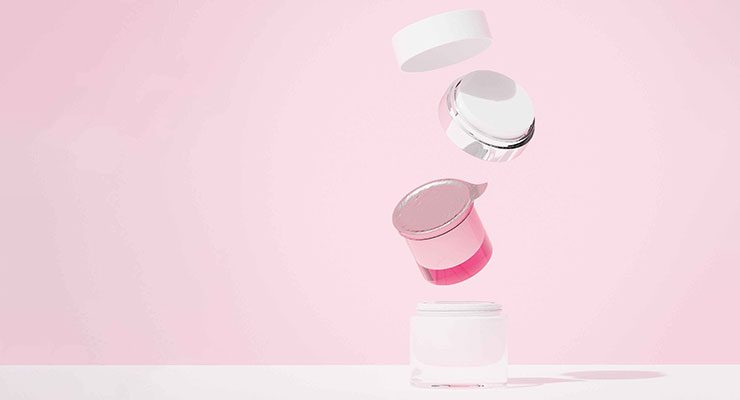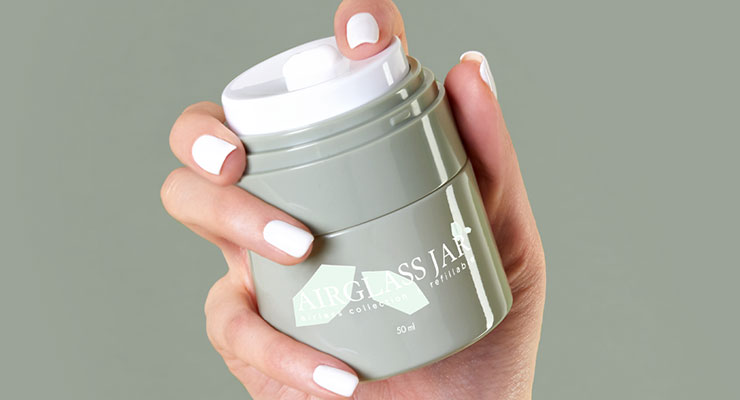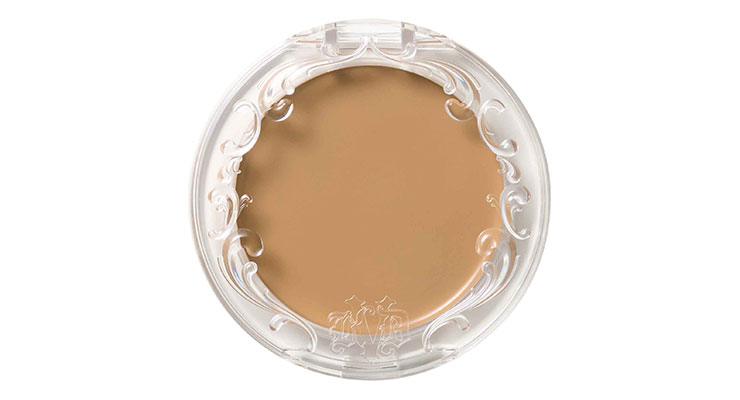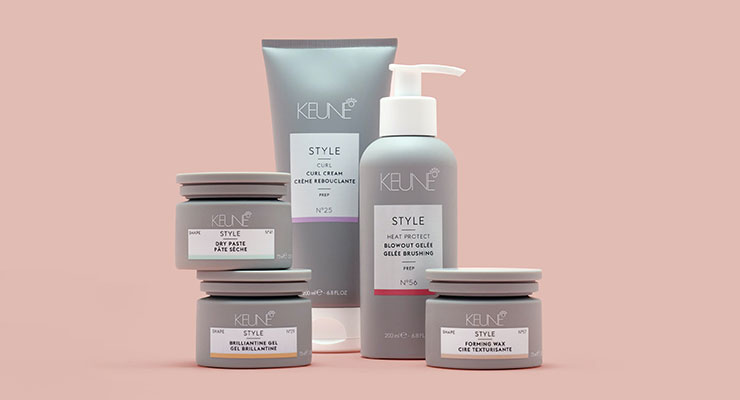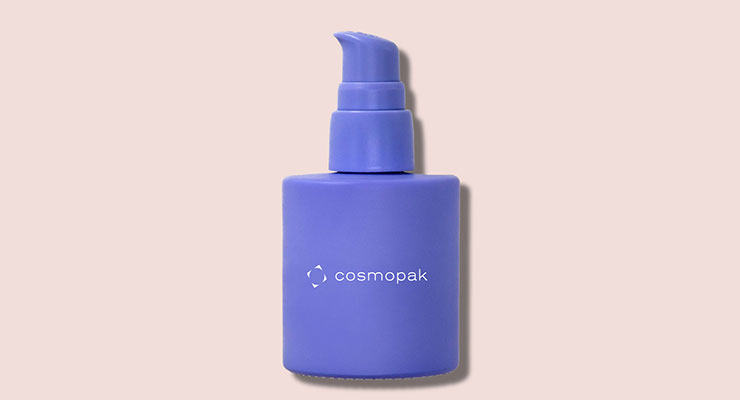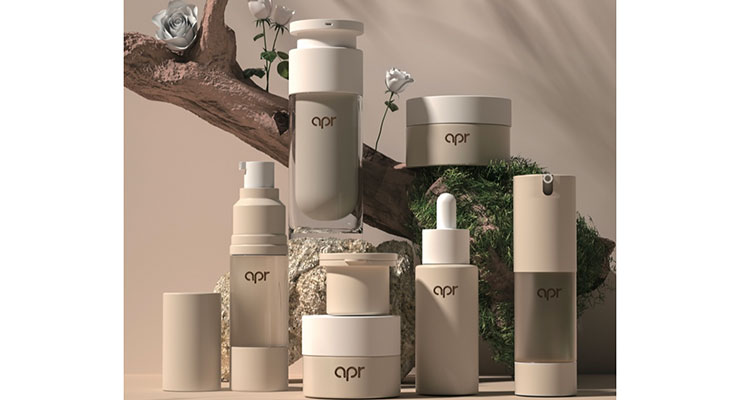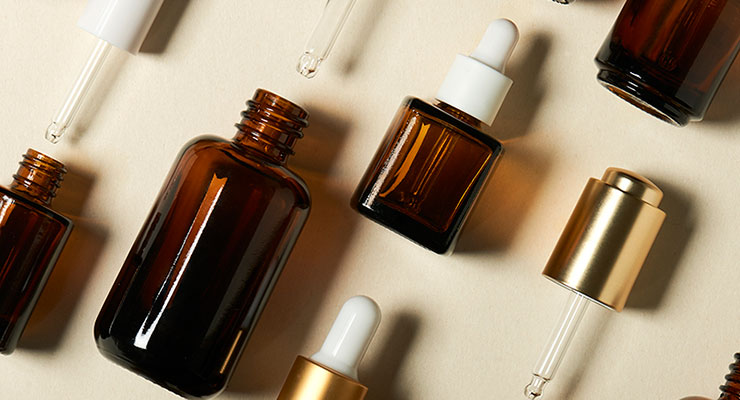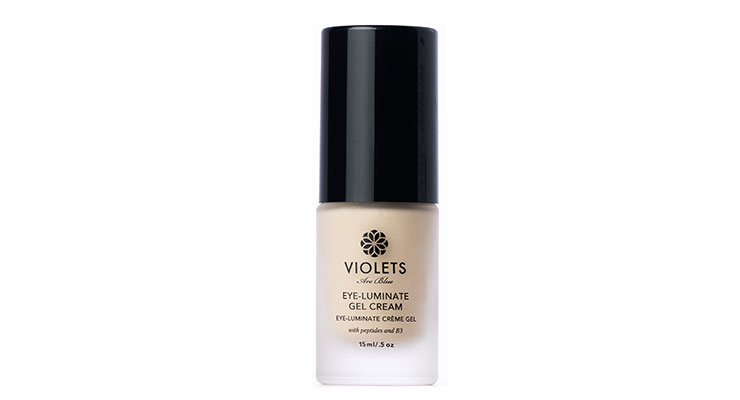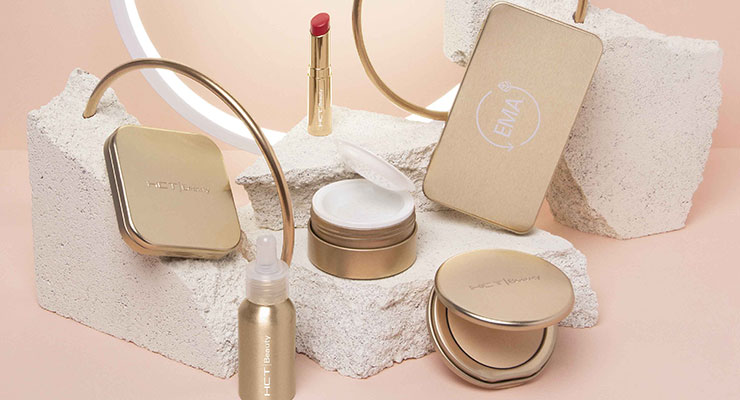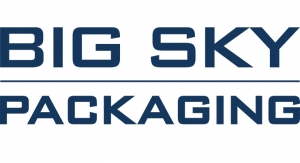Marie Redding, Senior Editor07.22.22
Many beauty brands are swapping long lead times and the high costs of tooling for budget-friendly stock packaging, which is often “in-stock” and available quickly. Other brands choose to create a semi-custom package by adding custom details to stock components. Or, some suppliers offer “standards,” which often means low or no tooling costs—but it’s still made-to-order, so you’ll have to factor in lead time.
Packaging suppliers offer various options in stock packaging and standards—and beauty brands are likely to benefit no matter which is chosen. Even if a brand decides to customize a stock component, the supplier has already invested in developing and testing the design, which in most cases, cuts cost and speeds up time-to-market.
“Cost and time are always important factors in the production cycle, which is why brands of all sizes benefit from using stock packaging—not just indies,” says Daniel Wolfe, senior vice president of business development, Cosmopak. “A brand that we’re very proud of that uses our stock, and sustainable packaging is Clover by Clove + Hallow. Every item is packaged in a sustainable component,” he says.
Cosmopak offers thousands of stock packaging options across all beauty categories, but each item is made to order. “We don’t keep an inventory of components in a warehouse, but we have an internal digital database that allows us to quickly source packaging solutions per client request,” says Wolfe.
Robert Lopez, key account manager for the North & Midwest, U.S., at Baralan, also says stock packaging provides essential benefits for both emerging beauty brands and established companies. “Choosing stock packaging means a brand can keep less inventory in-house and have greater market flexibility,” he says.
Michael Warford, director of business development, ABA Packaging, says, “Smaller brands favor our stock packaging because of lower MOQs, quick availability, and flexibility in decorating. But we also have major brands buying our stock packaging and standards regularly. Speed-to-market and flexibility are their motivators,” he says.
Warford defines stock packaging as “in stock” at ABA’s warehouse in Holtsville, NY. “These components are ready to be decorated and shipped,” he says. We have a selection of glass bottles, plastic jars, metal caps, pump dispensers, rollerballs, droppers, and more. “We also offer “stock standards,” which use our stock tooling—but they’re made-to-order, so availability is subject to manufacturing and transit lead times,” he explains.
Dave Desai, vice president of sales and marketing, New High Glass, also says its stock packaging is readily available. “But, our standards are different. They are existing molds, but the packages are made-to-order,” he says. Which type is most often requested? “We have greatly expanded our stock line in recent years to meet market demand,” says Desai.
Desai explains that New High Glass creates collections instead of stand-alone items. “This helps our customers build an entire brand while maintaining a cohesive look and feel. Our Camellia Collection is a perfect example. It includes four glass bottles and five glass jars,” he says. The line can be paired with New High Glass’s “Everest” dispensing closure, a stock component offered in two versions—a treatment pump and a fine mist sprayer.
Precise Cosmetic Packaging also offers a variety of stock packaging options. “We can pull from our inventory for immediate shipping—eliminating the need for mold tooling, which would add time and cost,” says Cynthia Ellis, sales representative, Precise Cosmetic Packaging.
“This is very advantageous for new brands. Our open stock inventory always varies, but options include PET/PCR lip color packaging, two-tiered compacts for face products, palettes with different pan shapes, applicators, brushes, and more,” she says.
Ellis works with many indie brands, which often request stock packaging. “They often request to see packaging that doesn’t require mold tooling or high MOQs,” she says. “Larger brands are also usually eager to review our existing packaging styles first, but often end up customizing a package to fit their brand aesthetic. Then, tooling is required—but often it will be a minimal mold tooling adjustment,” she explains.
Wolfe says Cosmopak often works with brands to develop packaging that he calls “semi-custom.” “It’s a combination of stock and custom tools—and usually requires only minor modifications to tooling and processes. Semi-custom packaging allows for a fully custom aesthetic, but with a timeline and mold investment far closer to stock packaging,” he explains.
Andrea Ucchino, head of design and marketing, Premi Industries/Berlin, says brand marketers should remember that stock packaging is not all alike. “When a brand chooses our standards, they benefit from our many years of R&D experience and design research—combined with our Italian love of beautiful things,” she says. Premi Industries/Berlin offers standard packaging options that range from simple bottles and jars to complex airless systems.
Sustainability is Always a Focus
Whether a brand is using a stock package, standard, or creating a custom design, sustainability is always a part of the conversation—and suppliers are delivering many options.The team at Premi Industries/Berlin says that over the last year, its “Heavy,” “Infusion” and “Airglass” collections are most in demand. “Our Airglass collection is a complete standard range of airless solutions in glass—and an ideal package to protect a formulation from contamination. It is refillable and recyclable,” says Ucchino.
SeaCliff Beauty offers stock packages made using ocean-bound plastic. “We also offer 100% recyclable mono-material airless systems, refillable solutions, bio-resins, and more,” says Amanda Deak, senior marketing manager, Seacliff Beauty. “Our refillable packaging has been of great interest for beauty brands, specifically, our Refillable Airless Pump Jar,” she says.
SeaCliff Beauty’s Refillable Airless Pump Jar is available in multiple materials, sizes and colors. It can contain up to 30% PCR for inner jars, which are PP. It is ideal for skincare products like face creams, moisturizers and more.
Another supplier, APR Beauty Group, offers many eco-conscious stock packaging options. “We offer stock packaging in PCR resin and refillable designs,” says John Chen, founder & CEO of APR Beauty Group.
Ariel Kuzon, director of marketing, HCT by kdc/one, says the need for sustainable packaging keeps growing. “Last year, eighty percent of our new stock production tools had a sustainability aspect. This year, we are targeting one-hundred percent,” says Kuzon. “Our new stock collections are either refillable or made in recyclable materials—PET, PP, metal, and glass. We also can include PCR material into most of our existing tools,” she says.
KVD Beauty chose HCT by kdc/one’s Eco PET compact concept, one of the supplier’s stock designs, for its Good Apple Skin-Perfecting Foundation Balm. The round compact features a lid customized with decorative details. “We created a custom design with embossing to add their branding and aesthetic while keeping the compact 100% recyclable,” explains Kuzon.
HCT by kdc/one offers beauty brands the most extensive stock library in the industry, according to Kuzon—and it’s filled with packaging options for products across all beauty categories. HCT’s stock library offers bottles, compacts, droppers, jars, lip gloss, lipstick, mascara, palettes, pens, pumps, sticks and many more.
Robbert Bouman, design director, Europe, at Innovative Beauty Group (IBG), says sustainable stock packaging designs, especially refillable packaging, make up most of the requests from beauty brands. Fasten, an IBG company developed its Mono Collection as a complete packaging range made from a single material to ensure easy recycling. “Mono-material pumps in 100% PP are very much in demand,” says Bouman. “We offer pumps in different outputs to fit various neck sizes. We have a mono pump solution for every package we develop,” he says.
Haircare brand Keune Style combines many of IBG’s standard packaging items with its customized Mono PP jar. “Keune Style’s products are in packaging with a custom gray and matte finish for a unique look. The line shows how it doesn’t take a big mold investment to create a unique look,” says Bouman. “Invest in customized details where it will count to add value,” he advises.
Cosmopak presents new collections each year as inspiration for brands—and most focus on sustainability. Each collection highlights a small selection of its available standard options. “Last year, we featured our Let’s Vibe makeup and Let’s Indulge skincare collections focusing on sustainability—with refillable, mono-material, and PCR options,” says Wolfe. “This year, we are launching Let’s Nurture to showcase a wide variety of materials,” he says.
Decorations Will Differentiate
Whether it’s a tight budget or a timing issue, when mold investments aren’t an option, it can be a challenge for any brand. “But this creates an opportunity to be creative,” says Bouman. “The challenge is always to create a unique look to stand out on the shelf and add value to the design,” he says.Suppliers suggest using various decorating processes to transform a stock package.
Decoration and semi-customization will make all the difference, according to Premi Industries/Berlin’s Ucchino. “Use design to give a standard package a strong point of differentiation,” she advises. “It’s an ideal fast, cost-effective way to make a standard package look amazing,” she says.
Ellis says the team at Precise Cosmetic Packaging often suggests decorating stock packaging with labels. “They are the easiest and most flexible solution for a small brand because when you use direct printing, that package can only be used for that product—but a label can be removed,” she says.
Warford says ABA’s stock packaging can be decorated easily to match a line’s existing branding. The supplier keeps its “in-stock” colors basic for more effortless decorating. ABA’s stock glass and plastic packages are clear, while its stock plastic caps are primarily black or white. The supplier’s metal caps come in shiny silver and gold or matte silver. “We offer decorating services that include spray coatings, screen-printing, and hot-stamp printing,” says Warford.
Cosmopak’s Wolfe says its most often requested decorating techniques include silk-screening, hot-stamping, spraying, 3D printing, anodization, and heat-transfer printing.
APR Beauty also offers a large variety of stock packages, including airless bottles, and can also decorate. “We do in-house silk-screen printing, pad-printing, and hot-stamping, all in the U.S.,” says Shen.
SeaCliff Beauty’s decorating capabilities span from hot-stamping to vacuum metallization and laser etching. “We can provide brands with that unique one-of-a-kind look,” says Deak.
Rising Demands Increase Supply
Many suppliers report increased requests by beauty brands for stock packaging, so many have invested in developing new collections. As a result, beauty brands have more options to choose from when looking for stock packaging and standards.“The number of stock packaging options available here at SeaCliff Beauty has increased immensely,” says Deak. “Not having to design and build custom molds is a major advantage for Indie brands, and we’re responding to this need,” she says.
New High Glass’s Desai also saw a growing need, which fueled development. The supplier launched its stock packaging program in 2019 to meet the ever-increasing demand from skincare brands.
“Now, supply-chain disruptions and the shipping crisis are increasing the demand again,” Desai says. “Current issues are taking a toll on both small and large brands. Imagine having a demand for your product and no packaging to fill it—that is the worst possible scenario for any brand,” he says. “Stock packaging that can be customized by decorating at a local decorator is fulfilling this need right now—and giving beauty brands peace of mind,” he explains.
Ellis agrees and says, “We see many brands facing challenges with supply chain issues and dealing with the pressure of shorter lead times. Indie brands, especially rely on the availability of stock packaging,” she says.
Wolfe weighs in, saying, “The demand for stock packaging has remained strong. Speed-to-market continues to be an issue for many brands, and decorating a stock package is the fastest way to market.” For this reason, Cosmopak continually expands its stock packaging options and invests in production tools. “We ensure the latest trends and technologies are reflected in our offerings,” Wolfe says.
Baralan’s Lopez says supply chain disruptions have affected many brands and suppliers. “We have worked diligently to replenish stock so we can offer a large selection of glass bottles and jars. We can also provide the supporting accessories, including brushes, treatment pumps, droppers, and closures,” he says.
Glass Stock Packaging is Plentiful & Eco-Friendly
Many beauty brands are requesting glass packaging, suppliers say. “Many of APR Beauty’s customers are now requesting stock packaging in glass,” says Shen.Brand marketers like the fact that glass tells a sustainability story, according to Baralan’s Lopez. Baralan offers molded amber glass that can include up to 40% PCR content. “Our flint glass uses up to 18% PIR (Post Industrial) content as part of the manufacturing process,” he says.
Brands choose colored glass due to the product protection it offers, and Baralan recently expanded its stock collections of amber, flint, and cobalt blue glass bottles.
Options include 15-, 30-, 50ml bottles—and a 50ml amber jar. “Molded amber and cobalt glass provide a deep level of UV protection for sensitive formulas in the skincare and cosmeceutical space,” says Lopez.
“Our wide selection of flint glass bottles and jars can achieve similar aesthetics through direct decoration treatments. We can introduce opaque or translucent spray color techniques combined with UV additives in the inks for additional protection against light. Combining organic spraying and silk-screening decorations won’t interfere with recyclability,” Lopez explains.
According to Lopez, the team at Baralan is also fielding increasing requests for its wide-neck glass jars that have a higher capacity. Two of the supplier’s stock packaging glass collections are its most popular—”Minerva” and “Olivia,” which will include a new 100ml size later this year. “We’re also launching ‘Olivia Slim,’ which reduces the weight of the glass at the base,” says Lopez.
Violets are Blue Skincare chose Baralan’s 15ml Minerva Slim bottle in a wide-neck style for easy filling for its Eye-Luminate Gel Cream. “The glass is frosted using a permanent etching technique, with a one-color silk-screen decoration,” says Lopez. “The bottle is paired with our Twist-to-Lock Cream Pump 18, which provides a smooth and controlled dose. Our Mauritius Slim over-cap sits flush with the bottle and looks elegant,” he says.
ABA's Warford says glass has a luxe look and feel that is appealing. “It provides a good barrier to the elements, and it is considered to be a more sustainable material,” says Warford. “Sales of our stock glass packaging have grown tremendously in recent years due to these attributes,” he says.
Desai says that along with the increasing interest in New High Glass’s stock glass packaging, the demand for frosting and spray coating has grown exponentially. “This has caused increasing lead times, costs, and MOQs. To counter this, we have started offering all our glass packaging, both clear and frosted from stock—and we intend to begin introducing colors later this year,” he says. “All of our coatings are organic-based and do not affect the recyclability of our glass,” he adds.
Desai says New High’s stock offerings for fragrances are “driving a movement” among Indie brands. New High’s Eco-Fragrance line includes an easily removable fine mist sprayer. “Crimped-on sprayers make the glass unrecyclable, so many brands are switching,” Desai explains. New High’s glass factory in Italy is the largest glass recycling company in the country, and it feeds the demand for PCR glass.
Metal Is Popular
Cosmopak’s Wolfe says more brands are interested in using metal packaging, especially for color cosmetics. “Aluminum is a very popular material,” he says.ABA’s standards include its aluminum jars and bottles, which can be decorated using multi-color offset printing and other innovative techniques.
Beauty brands looking for a plastic-free, recyclable, luxe stock packaging option for color cosmetics might consider HCT by kdc/one’s new mono-material metal collection. It includes a refillable jar, 8-well eyeshadow palette, 3-well palette, round compact, square compact, lipstick, and dropper bottle.
Metals are an eco-conscious material choice, says HCT by kdc/one’s Kuzon. “Aluminum, steel, iron, and tinplate are often accepted by curbside recycling programs and can all be infinitely recycled without degradation,» she explains. “The decoration and branding possibilities are endless,” she adds, mentioning embossing, debossing, printing, coating and spraying. “And unlike recyclable plastics, coatings, sprays, and even small amounts of glue won’t affect recyclability,” she explains.
Expect More Creative Solutions, Suppliers Say
What can we expect to see next? Suppliers say interest may be shifting from decoration to design, based on brand requests.“We feel the innovation now is more focused on simplifying application for the user,” says Kuzon. She says that efficient and user-friendly packaging are the top requests from brands at HCT by kdc/one. “This is a change—various decorating options, especially for makeup palettes and other limited-edition products were once requested most often, but not anymore,” she explains.
SeaCliff Beauty’s Deak agrees and says, “The key to a beautiful stock package is a creative design.” SeaCliff’s Lip Trio for Jazmine Beauty is an example. “We used a stock package that was meant for nail polish. By switching out the applicator brush to a doe foot, we were able to transform this package without additional costs. Then we decorated it with a custom pearlized pink,” she explains.
In the end, it takes creativity—but also a reliable supplier partner. “We are passionate about our partnership with our customers—not only in the launch phase but to fulfill stock packaging requests, long-term. Reliability and affordability are most important to brands and to us,” Baralan’s Lopez says.
No matter which supplier you choose, delivering on-time and on-budget is crucial—and for many brands, stock packaging and standards are helping make this possible.

